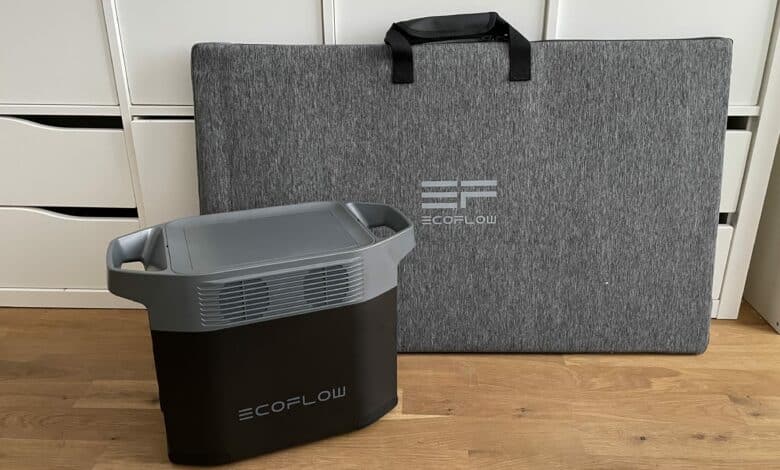
With the help of a power station, you can make yourself self-sufficient from the conventional household socket. Especially with the help of mobile energy storage units, you’ll always have enough power for your electronic devices when you’re camping, hiking or at a festival. If you decide on a model that offers the option of being charged by solar energy, you can produce and use green electricity on the go. This makes even vacations in remote regions possible without any problems. EcoFlow has always been a big player in the field of mobile energy storage. With its Delta 2, the manufacturer now launches a power station that primarily wants to score with great features at a fair price. We want to take a closer look at what the energy storage for home and on the go is capable of in practice in the EcoFlow Delta 2 test.
Technical data
| Capacity | 1024 Wh (up to 3000 Wh with Delta Max auxiliary battery) |
| AC output | 4 sockets, 1,800 W total (peak 2,700 W) |
| USB output | USB-A: 2 ports, 5 V, 2.4 A, 12 W max. 2 ports, 5 V, 2.4 A / 9 V, 2 A / 12 V, 1.5 A, max. 18 WUSB-C: 2 ports, 5/9/12/15/20 V, 5 A, max. 100 W |
| AC output | 4 sockets, 1,800 W total (peak 2,700 W) |
| DC output | Car outlet: 1 connector, 12.6 V, 10 A, max 126 W.
DC5521 output: 2 ports, 12.6 V, 3 A, max. 38 W |
| Charging via AC/DC | 1200 W |
| Charging via solar | Up to 500 watts |
| Battery type | LiFePO4 |
| Lifetime | Battery capacity at 80 percent after 3000 charge cycles |
| Dimensions and weight | 400 x 211 x 281 mm and 12 kg |
| Performance | Continuous power of 1800 W, peak power of 2700 W |
| Price | € 999.00 * |

EcoFlow Delta 2 review: differences from its predecessor
- NCM becomes LiFePO4
- 2 kg less weight
- Battery is expandable
Not much has changed when comparing the Delta 2 to the first generation Delta. But that seems only at first glance. Thus, the market leader in Germany has made small but subtle changes that should improve the performance and longevity of the power station in particular. EcoFlow finally uses LiFePO4 battery cells in the Delta 2. In contrast, the predecessor still used an NCM battery. We will clarify exactly what advantages this brings later in the test.
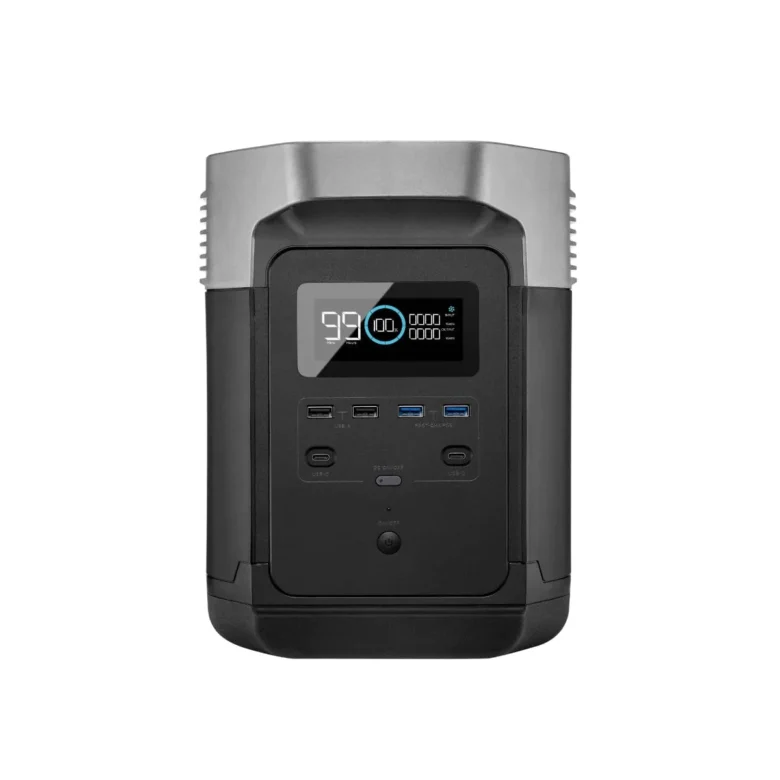
Also, in its second generation, the Delta no longer just has WiFi, but Bluetooth as well. That means you can use the app features outside of a network. Another significant upgrade is the new expansion option. This means that the already high battery capacity of the Delta 2 can be expanded even further with additional batteries. We know this feature from the EcoFlow Delta Pro (test), among others.
EcoFlow Delta 2 review: scope of delivery
In addition to the power station itself, the scope of delivery includes practical cables. On the one hand, this includes a total of two AC charging cables in the form of a car cable and a DC5521 to DC5525 cable. Of course, the manufacturer also includes the matching power cord. This comes without a power supply unit and is thus pleasingly compact.
The whole thing is rounded off with the user manual along with the warranty card. Unfortunately, you have to do without a charging cable for solar panels. However, this is on the solar panel anyway, which EcoFlow provided us with for the test.
EcoFlow Delta 2 review: design and workmanship
- Classic EcoFlow design
- No fan protection
- Practical carrying handles
At first glance, the EcoFlow Delta 2 can hardly be distinguished from its predecessor. So also here rather restrained shapes and colors determine the overall picture. EcoFlow again relies on a combination of gray and aluminum as we know it, for example, from the River 2 Max (test). The size has also not really changed compared to the Delta of the first generation. Only in terms of height, the Delta 2 now measures 1 cm more than the Delta at 28 cm. Width and length, on the other hand, are identical at 21 cm and 40 cm, respectively, and ensure that the power station can be comfortably accommodated.
When it comes to weight, there are more significant differences. The Delta 2 weighs 12 kg, almost 2 kg less than the first generation. This should be welcomed at the latest when you have to transport the mobile energy storage device a few meters. To make carrying it as comfortable as possible, EcoFlow once again relies on its handles on the front and back. The rather high weight naturally ensures that the Delta 2 is not suitable for long hiking trips. Here, more compact powerstations like the Bluetti EB3A (test) make much more sense.
Overall, I really like the look of the Delta 2. After all, it comes in a timeless design and scores with inconspicuousness. This makes it clear that the power station would also like to be used at home. However, you won’t be able to avoid wielding the dust cloth from time to time. After all, the dark gray part of the power station is a real dust magnet. There are large rubber feet on the bottom that prevent the mobile energy storage from slipping. In combination with the high weight, you don’t have to worry about it slipping or even falling over.
As a mobile power outlet, it is perfectly suited for this purpose. Of course, this also applies to use in the van or family bus during camping vacations. However, it looks different when used outdoors. I would not necessarily recommend you to use the Delta 2 at the beach or in bad weather conditions outdoors. After all, it doesn’t offer any real protection against water and dust penetration. Damage could well occur here in bad weather or the odd carelessness. However, apart from the missing protection mechanisms, the powerstation scores with a really great build quality.
EcoFlow Delta 2 test: LiFePO4 promises more longevity
- 80 percent battery capacity after 3000 cycles
- More safety and longevity thanks to LiFePO4
We have already mentioned that one of the most significant changes compared to the predecessor is the battery technology. At first glance, EcoFlow seems to have made deteriorations in this regard in the Delta 2. After all, the rich 1260 Wh of the predecessor shrinks to “only” 1024 Wh. Not without reason, the second generation of the Delta 2 weighs kg less. But what might sound like a disadvantage is a big improvement in almost every respect. After all, EcoFlow has decided to turn its back on the Delta’s NCM batteries. So the Delta 2 now uses much better LiFePO4 batteries.
Probably the most significant advantage concerns the service life of the battery cells. A comparative look at the technical data of the two powerstations already makes this clear. According to the data sheet, the first generation still offers 80 percent of the original capacity after just under 800 charging cycles. The new LiFePO4 batteries, on the other hand, still offer 80 percent after 3000 cycles. Consequently, you should be able to enjoy your Delta 2 for much longer. To what extent the promises are kept can of course not be said at this point. However, if the 3000 charge cycles are true, you should be able to use the Delta 2 for many years without any restrictions in battery capacity.
But not only in terms of longevity, but also in terms of safety, LiFePO4 batteries have the edge over the old NCM technology. Thus, one does not have to fear a fire or even an explosion here if damage should occur at the power station. This should be interesting for all those who like to transport their mobile energy storage in the car or use it on the construction site. Consequently, the new battery technology actually only brings advantages, apart from the lower energy density.
EcoFlow Delta 2 review: a look at the performance data
- Continuous power of 1800 W
- Peak power of 2700 W
- X-Boost for devices without electronic control
Once we are at the technical data, let’s also take a look at the performance of the Delta 2. Here you have to look for the changes with a magnifying glass. Thus, the power station is capable of outputting a constant 1800 watts of power. A temporary output of 2700 watts is also possible. Consequently, somewhat more power-intensive electronic devices can be operated for a short time. We already know this from the predecessor. I find the X-Boost feature really cool. This throttles devices that do not have an electronic control. Should an overvoltage occur, the Delta 2 simply reduces its output power.
In practice, this means that a kettle, for example, is simply operated with less power and thus with less heat. This eliminates any negative consequences of a possible overvoltage in advance. During the test, I was also able to use the Delta 2 with my kettle without any problems. Here, the power station delivered a reliable output power. However, you can also hear the whole thing. The fan noise of the power station is clearly audible with power-hungry devices such as toasters, drills and the like. This is probably also due to the fact that EcoFlow chooses to hide the power supply inside the device.
EcoFlow Delta 2 test: the right connection for everyone
- 4x USB-A, 2x USB-C, 4x Schuko, 1x car charging port, 2x DC outlets
- Ports on front, rear and left side of device
- Ports for charging at the back
In terms of ports, the EcoFlow Delta 2 takes a different approach than many other powerstations. Thus, the manufacturer distributes the ports on a total of three sides. At the front, there are a total of six USB ports (4x USB-A, 2x USB-C) .

These can be turned on and off with the corresponding button. A highlight on the front is the very easy to read display. Here you can read the most important information about the power station even in strong light.

This includes not only the current input and output power. On top of that, you can see the remaining battery capacity here. In the process, the Delta 2 also calculates how long the mobile energy storage would still hold out at constant output power.
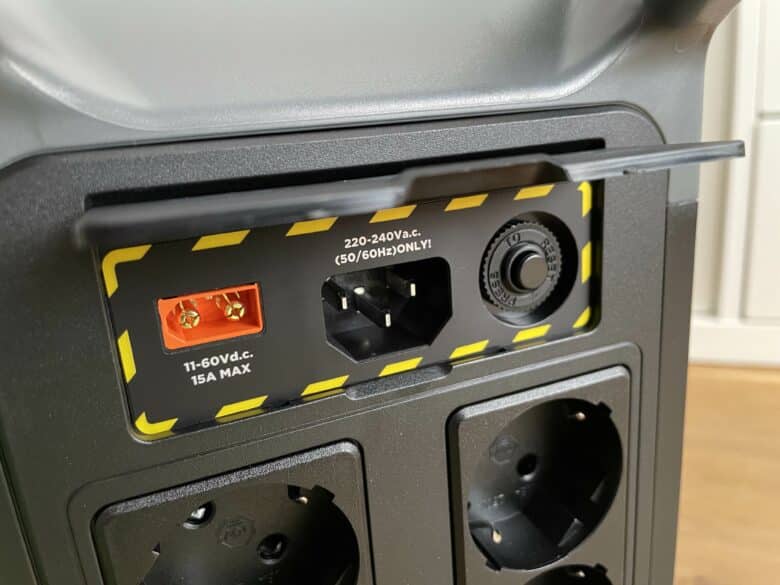
At the back, you’ll find a total of four 230-volt Schuko sockets. In addition, there is a car socket protected by a cover as well as two round sockets with 12 volts each.
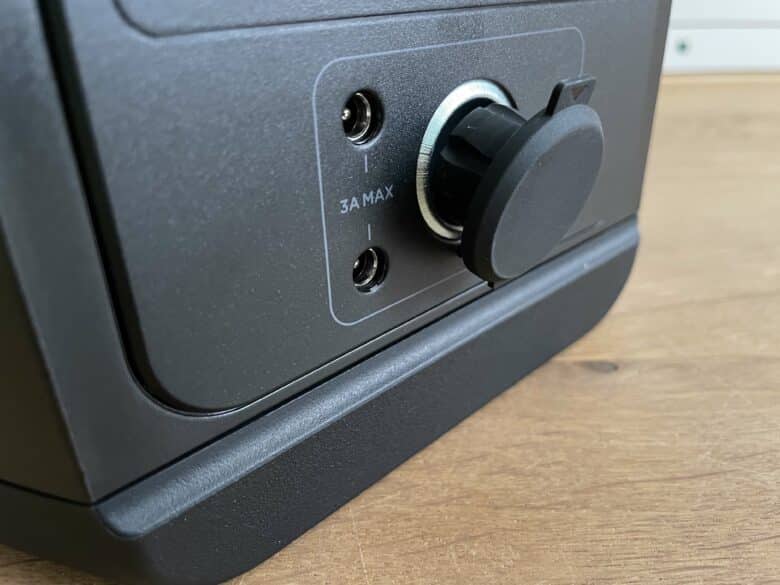
While the sockets are permanently ready for use, the other three ports can be activated or deactivated with a matching button. Above this is a protective flap behind which the ports for charging the Delta 2 are located.
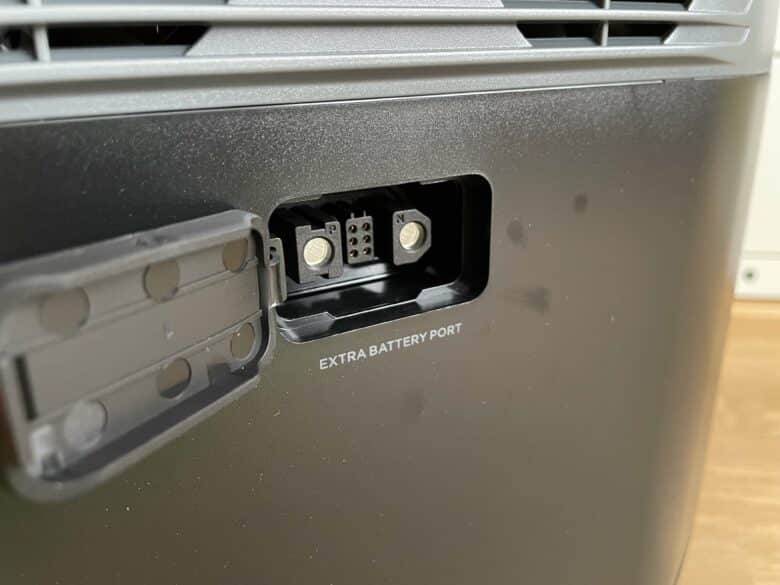
In addition to a port for charging via a power outlet, you’ll also find the port for charging via a solar panel here. On the right side of the Powerstation, you will find a port for connecting additional batteries. With their help, you can expand the Delta 2 up to about 3000 Wh.
EcoFlow Delta 2 Test: The Powerstation in Practice
- Reliable operation of electronic devices
- Fans sometimes become extremely loud (from 100 watts of power)
- Rapidly fast charging (in under an hour from 0 to 80 percent)
After we have gone through the Delta 2’s technical specifications in detail, it is time for the maturity test in practice. It should be mentioned at the outset that the handling of the power station is really child’s play. Even if you haven’t had anything to do with such an energy storage device, you’ll know what to do right away. First, I connected the Powerstation to the power plug and plugged it into my household outlet. In the process, the display turned on automatically and showed battery level and the corresponding input power. However, to keep the self-consumption as low as possible, the display switched off again after a few minutes. As soon as you turn consumers like the USB ports on or off again at their corresponding button, the display also turns on again.
I first used the Delta 2 via USB-A to charge my iPhone with it. In the next step, I connected my MacBook Pro via USB-C. Thanks to PowerDelivery (PD), this was able to charge with a whopping 100 watts. I then tested the Schuko sockets and connected the drill, toaster and kettle. Each time, the Powerstation was able to reliably deliver its energy. However, power-hungry devices also draw out the fan, as it was clearly audible at times. I observed that the fans were audible from a power output of just under 100 watts. In the test, the power station did not turn itself off at any time. Thus, I couldn’t achieve an overload. However, if it should happen, the manufacturer promises a safe automatic shutdown without having to fear damage.
From 0 to 80 in under an hour
If the battery is then once empty, you have to help it back on its feet, of course. The fancy power station offers several options here. The most classic way is probably charging via the household socket. Here, the mobile energy storage device flexes its muscles and charges with 1200 watts. This ensures that you can charge the battery from 0 to 80 percent in less than an hour. However, you will have to put up with the clearly audible fan here as well. After all, the built-in power supply heats up accordingly with such fast charging speeds. If you don’t want to do that, you can also throttle the charging power. Then the heat development is lower and the fan rotations are reduced.
For a possible Delta 3, however, I would simply like to see a focus on better ventilation technology. After all, it would be nice if the exceedingly short charging time was also possible with a quiet fan. However, this problem should only bother those of you who charge or use their power station in the living room. In practice, you are of course primarily happy about the short charging time. Personally, I’m happy to put up with a loud fan for that. If you want to charge the Delta 2 completely, you have to calculate just under 90 minutes. This even beats industry kings like the Jackery Explorer 1000 Pro (test), which has a similar battery capacity.
Solar charging with up to 500 watts
Of course, the Delta 2 can also be used as a solar generator. I still find this feature to be a real highlight, even after testing many powerstations with the corresponding charging function. After all, you can use it to make yourself independent of the public power supply on a small scale. EcoFlow also provided us with a 220 W solar panel to go with the Delta 2 for the test. But even more is theoretically possible with the mobile energy storage. EcoFlow has increased the maximum input power via the solar connection from 400 watts to 500 watts. So you can theoretically use two of them.
Since we tested the Powerstation in the depths of winter, the results are of course not representative. So I was able to pick up between 50 and 70 watts with some sunshine. Of course, this is better than nothing, but in the summer I expect much better results here. By the way, the Delta 2 also allows simultaneous charging and discharging. This is practical in that you can, for example, generate solar energy during a camping trip and consume it at the same time. A UPS function is also on board.

The acronym stands for uninterruptible power supply, and it turns the power station into a compact backup power supply. In practice, it looks like this: You connect the Delta 2 to the most important consumers, such as the refrigerator. Then you plug it into your household socket so that it is always fully charged. If there is a power outage, the Delta 2 takes over for your power circuit. So that the power station’s battery doesn’t suffer in the process, it’s only claimed when the power station needs to step in.
App control
The basic settings can all be made on the Delta 2 itself. However, EcoFlow also offers the option of app control here. As already mentioned, it is possible to communicate with the power station via WiFi as well as Bluetooth. All in all, the app is a practical goodie whose added value is certainly debatable. However, once you have familiarized yourself with it, you will probably be surprised by the possible uses. After all, you can not only view the current status of the power station.
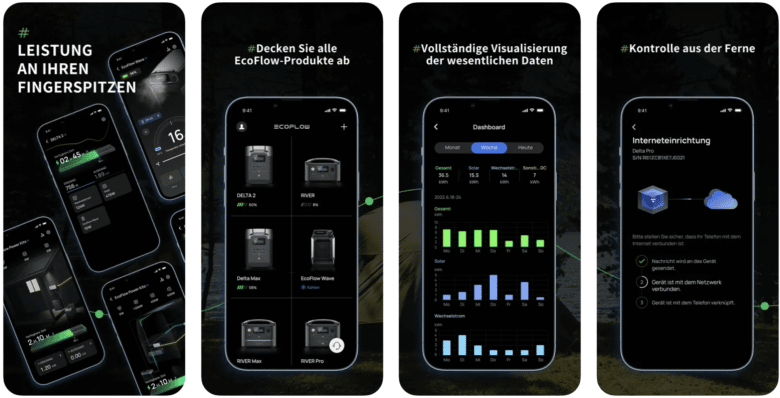
On top of that, the app serves as a control center through which you can change various settings. A practical scenario is the regulation of the charging power. If you want to charge your power station overnight while camping, it does not have to be full within 90 minutes. Therefore, it is a good idea to reduce the power in this case to relieve the fan. This prevents sleepless nights due to the background noise and still ensures a full battery the next day. Furthermore, different tones can be set here and the shutdown behavior of the display and the outputs can be regulated.
Conclusion
With the Delta 2, EcoFlow has managed to improve its already very good Delta of the first generation at the right corners and ends. The fact that the power station has less battery capacity than its predecessor with 1024 Wh is not a negative factor at all. After all, the successor not only benefits from a lower weight. On top of that, the new LiFePO4 batteries promise more longevity and safety. Should it still be too little, you can now triple the capacity by connecting additional batteries. With the high constant power of 1800 watts, most devices can be operated easily and reliably. Starting with the smartphone to the drill, I had no problems in the test.
The Delta 2 can also be used as an emergency power supply without any problems thanks to its UPS. A real hobbyhorse of the Delta 2 is also the impressively short charging time. Within less than an hour, the power station is charged from 0 to 80 percent. However, I have to complain a bit. Especially the loud fans annoyed me in the test. If you do not use the app to throttle the performance, you have to put up with the loud noise. Furthermore, I would have wished for a bit more protection at the outlets and ventilation slots. But that is complaining on a high level. Apart from that, the Delta 2 is one of the best powerstations I have ever tested.
EcoFlow Delta 2
Design & workmanship
Usability
Performance
Value for money
96/100
With the EcoFlow Delta 2, the market leader makes its popular power station even better. Very good work EcoFlow!




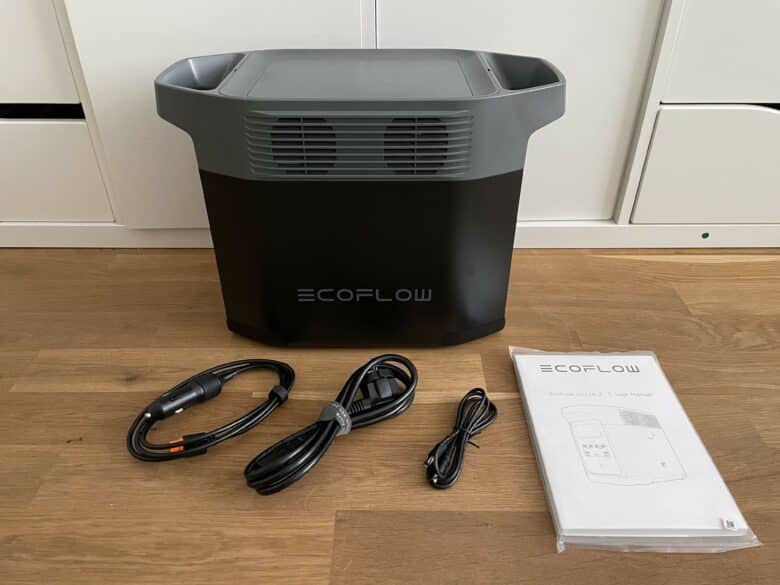


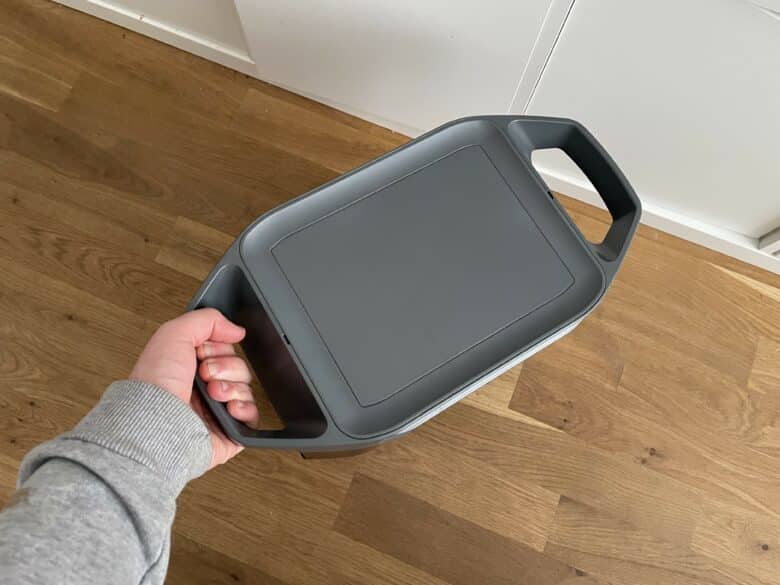
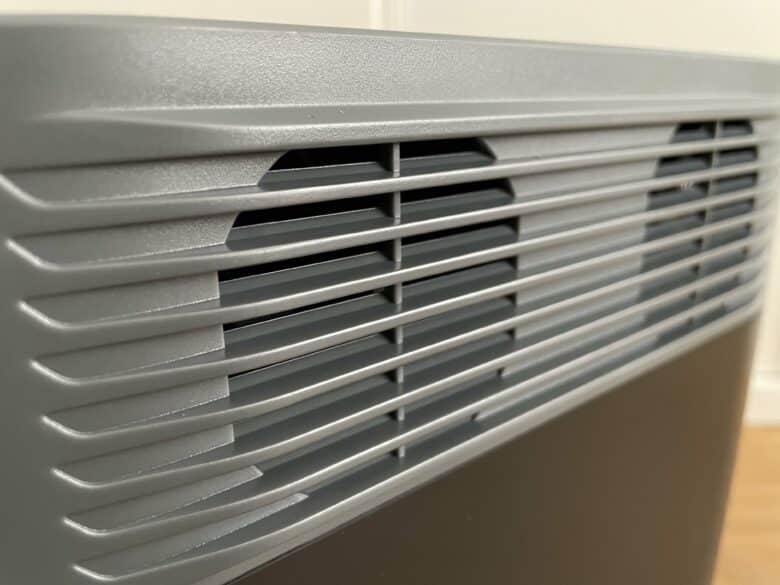
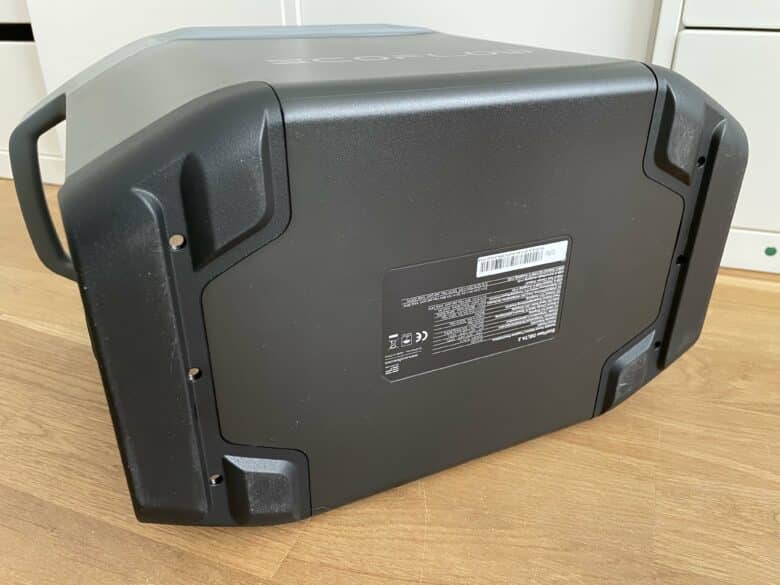
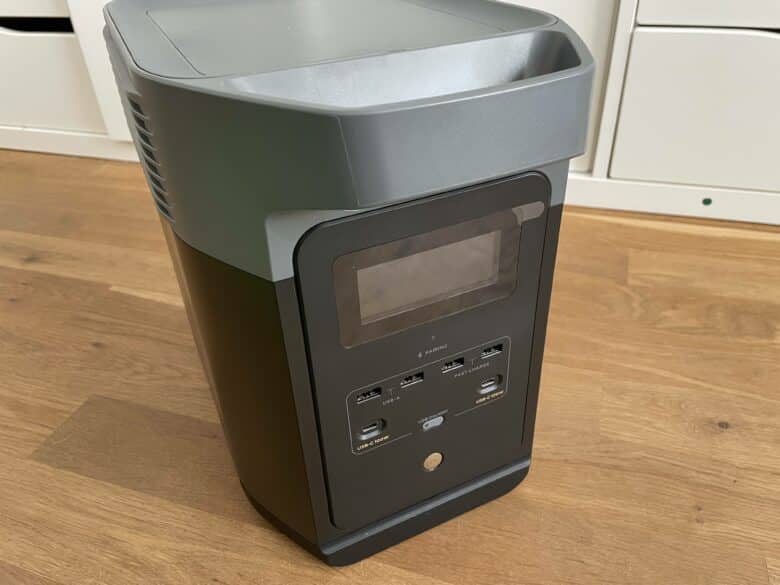
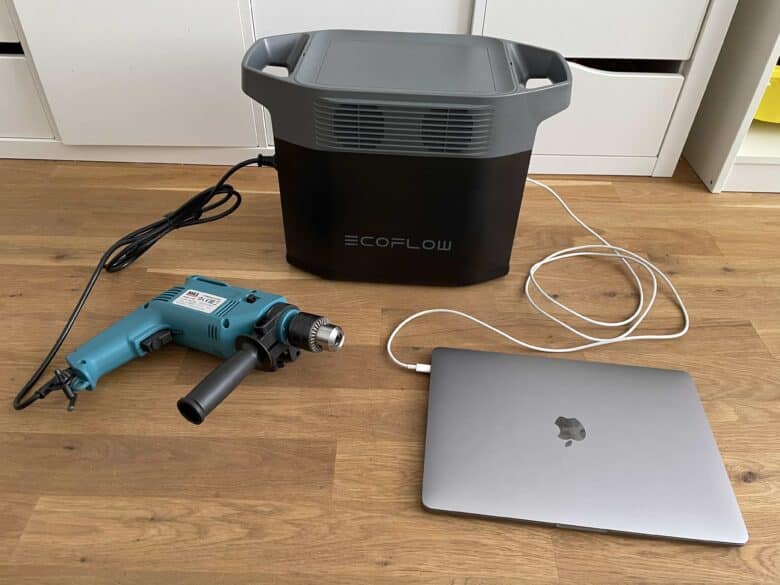
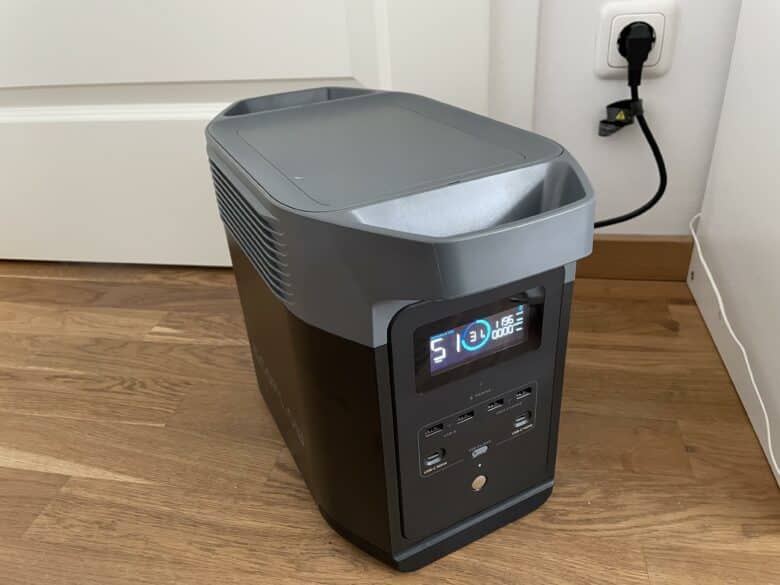
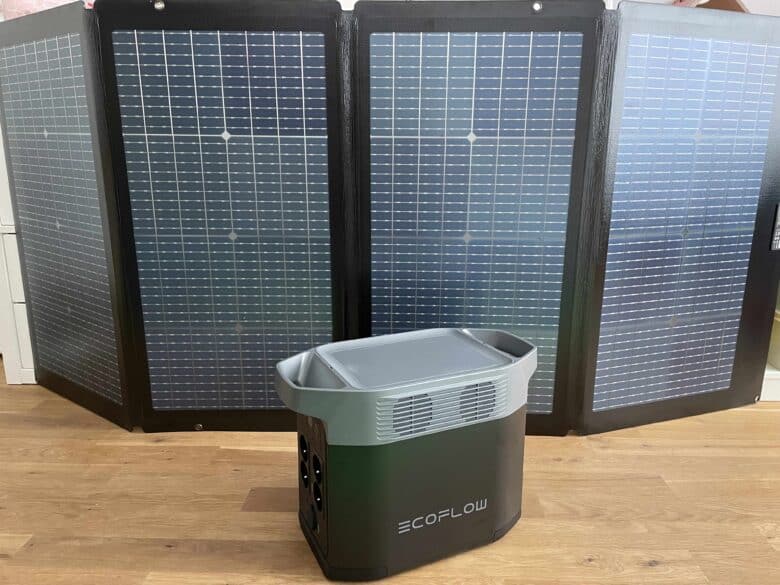
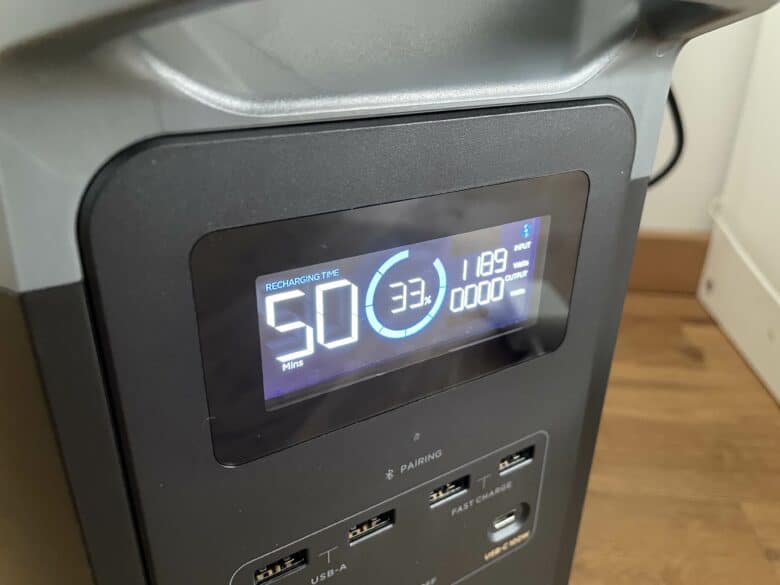

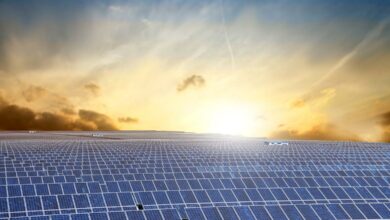
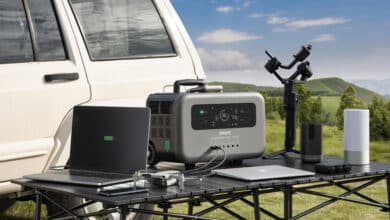
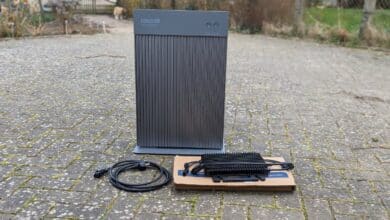
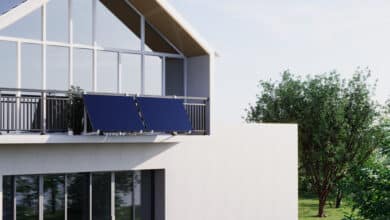
No replies yet
Neue Antworten laden...
Gehört zum Inventar
Beteilige dich an der Diskussion in der Basic Tutorials Community →